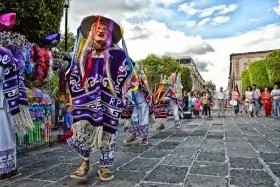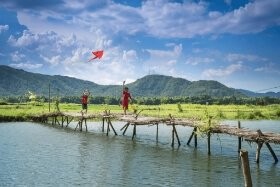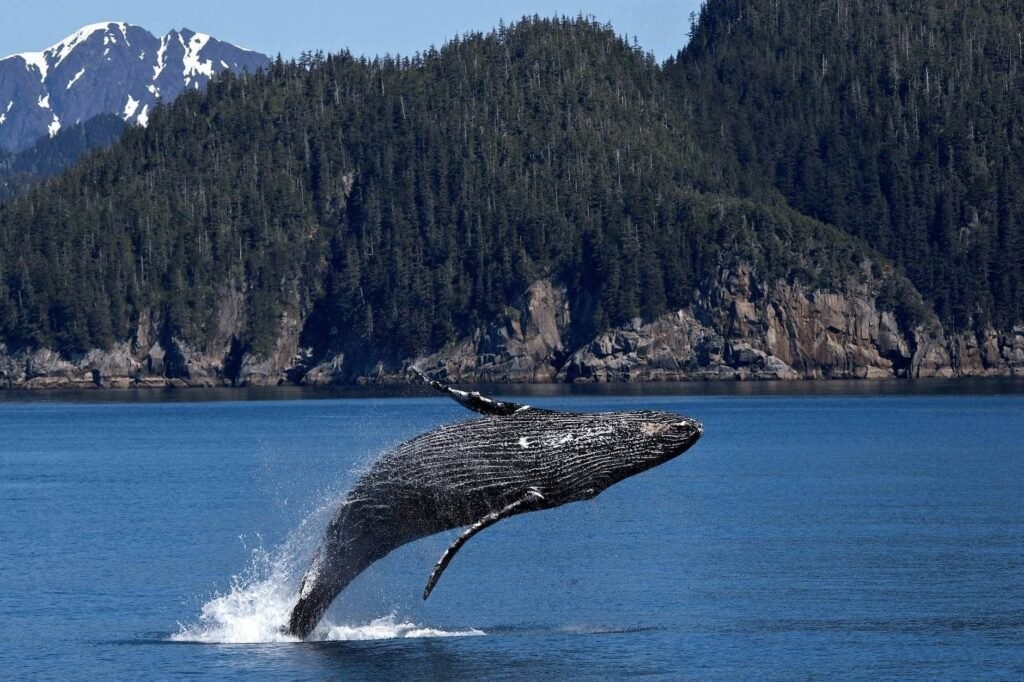What Types Of Tourism Are There? Exploring the world is an exciting adventure, and understanding the different types of tourism available can help you plan the perfect trip. At SIXT.VN, we believe in making travel accessible and enjoyable for everyone, offering a range of services to cater to your unique travel style in Vietnam. Discover the perfect way to experience Vietnam with our expert advice, convenient airport transfers, comfortable hotel bookings, and unforgettable tours.
1. Adventure Tourism: Embrace the Thrill
Adventure tourism is perfect for those who seek excitement and physical challenges while traveling. It involves exploring remote or exotic locations and engaging in activities that offer a rush of adrenaline.
What it involves: Activities like trekking, rock climbing, white-water rafting, scuba diving, and exploring jungles.
Why it’s popular: Adventure tourism allows travelers to push their limits, experience new cultures, and connect with nature in a unique way.
Example: Exploring the caves of Phong Nha-Ke Bang National Park in Vietnam, offering challenging treks and stunning natural beauty.
 Adventure Tourism in Vietnam
Adventure Tourism in Vietnam
According to a study by the Adventure Travel Trade Association (ATTA) in 2023, adventure travel is growing at a rate of 65% annually, showcasing its increasing popularity among travelers seeking unique experiences.
2. Accessible Tourism: Travel for Everyone
Accessible tourism focuses on ensuring that travel destinations and services are available to all people, including those with disabilities, seniors, and families with young children.
What it involves: Providing facilities and services that cater to people with mobility issues, visual or hearing impairments, and other special needs.
Why it’s important: Ensures that everyone can enjoy travel experiences, promoting inclusivity and equal opportunities.
Example: Hotels and attractions in Hanoi that offer wheelchair access, ramps, and other amenities to accommodate travelers with disabilities.
 Accessible Tourism in Hanoi
Accessible Tourism in Hanoi
The European Network for Accessible Tourism (ENAT) emphasizes that accessible tourism not only benefits travelers with disabilities but also improves the overall quality of tourism for everyone.
3. Agritourism: Experience Rural Life
Agritourism, or agricultural tourism, offers travelers the chance to experience life on a farm. It’s a great way to connect with nature, learn about food production, and support local communities.
What it involves: Visiting farms, participating in agricultural activities, tasting local produce, and staying in farm accommodations.
Why it’s appealing: Provides an authentic rural experience, promotes sustainable agriculture, and offers a break from city life.
Example: Visiting a tea plantation in the highlands of Vietnam, learning about tea cultivation, and enjoying tea tasting sessions.
 Agritourism in Vietnamese Highlands
Agritourism in Vietnamese Highlands
According to the Vietnam National Administration of Tourism, agritourism is growing as travelers seek more authentic and sustainable travel experiences, contributing to the local economy and preserving rural traditions.
4. Alternative Tourism: Sustainable and Responsible Travel
Alternative tourism focuses on travel experiences that are sustainable, responsible, and beneficial to local communities. It often involves eco-tourism, cultural immersion, and ethical practices.
What it involves: Choosing travel options that minimize environmental impact, support local economies, and respect local cultures.
Why it’s essential: Promotes sustainability, preserves cultural heritage, and ensures that tourism benefits local communities.
Example: Participating in a community-based tourism project in a rural village in Vietnam, staying in local homestays, and supporting local artisans.
 Community-Based Tourism in Vietnam
Community-Based Tourism in Vietnam
Research from the United Nations Environment Programme (UNEP) indicates that alternative tourism can significantly contribute to sustainable development by creating economic opportunities and preserving natural and cultural resources.
5. Atomic Tourism: A Glimpse into the Nuclear Age
Atomic tourism involves visiting sites associated with the atomic age, such as museums with atomic weapons, missile silos, and historical locations related to nuclear events.
What it involves: Exploring museums, historical sites, and monuments that tell the story of the atomic age.
Why it’s intriguing: Offers a unique perspective on history and the impact of nuclear technology.
Example: Visiting the Hiroshima Peace Memorial Park in Japan to learn about the atomic bombing and its aftermath.
 Hiroshima Peace Memorial Park
Hiroshima Peace Memorial Park
According to the Atomic Heritage Foundation, atomic tourism provides a valuable educational experience, helping visitors understand the complexities and consequences of nuclear technology.
6. Benefit Tourism: Exploring Social Welfare Systems
Benefit tourism is a controversial term referring to the act of traveling to another country to take advantage of social welfare benefits.
What it involves: Immigrating to a country with the intention of accessing social security, healthcare, and other entitlements.
Why it’s debated: Raises questions about immigration policies and the sustainability of social welfare systems.
Example: Individuals moving to the UK to claim child benefits or other social security payments.
 Social Welfare Benefits
Social Welfare Benefits
Research from the Migration Observatory at the University of Oxford provides insights into the impact of immigration on social welfare systems, contributing to the debate on benefit tourism.
7. Birth Tourism: Seeking Citizenship
Birth tourism involves traveling to another country for the purpose of giving birth, primarily to obtain citizenship for the child.
What it involves: Pregnant women traveling to countries with birthright citizenship laws to ensure their child becomes a citizen of that country.
Why it’s controversial: Raises questions about citizenship laws and the rights of non-citizens.
Example: Women traveling to the United States or Canada to give birth and obtain citizenship for their child.
 Birth Tourism in the United States
Birth Tourism in the United States
According to the Center for Immigration Studies, birth tourism is a complex issue that raises legal and ethical questions about citizenship and immigration policies.
8. Boat Sharing: Collaborative Maritime Adventures
Boat sharing is a practice where individuals share the use and costs of a boat, allowing more people to enjoy boating without the full financial burden.
What it involves: Splitting the costs of boat ownership, maintenance, and usage among multiple individuals.
Why it’s beneficial: Makes boating more accessible and affordable, while promoting responsible boat usage.
Example: Joining a boat sharing club or cooperative to enjoy sailing and other water activities.
 Boat Sharing on the Coast
Boat Sharing on the Coast
According to a report by the National Marine Manufacturers Association (NMMA), boat sharing is growing in popularity as more people seek affordable ways to enjoy recreational boating.
9. Booze Cruise: Party on the Water
A booze cruise is a recreational boat trip, often lasting several hours, where the primary focus is drinking alcohol and partying.
What it involves: A boat trip with music, dancing, and a focus on alcoholic beverages.
Why it’s appealing: Offers a fun and social way to enjoy the water, especially for younger travelers.
Example: A sunset booze cruise along the coast of Ha Long Bay in Vietnam.
 Booze Cruise in Ha Long Bay
Booze Cruise in Ha Long Bay
While there isn’t specific data on booze cruises in Vietnam, the tourism industry generally sees a demand for recreational activities that cater to younger travelers looking for social and lively experiences.
10. Business Tourism: Mixing Work and Travel
Business tourism involves traveling for professional purposes, such as attending conferences, meetings, trade shows, and corporate events.
What it involves: Travel related to work, often including accommodation, transportation, and business-related activities.
Why it’s essential: Supports economic growth, facilitates networking, and promotes knowledge exchange.
Example: Attending a business conference in Hanoi, staying in a hotel, and participating in networking events.
Alt Text: Professionals attending a business conference in Hanoi, highlighting business tourism.
According to the Global Business Travel Association (GBTA), business tourism is a significant contributor to the global economy, driving revenue for hotels, airlines, and other travel-related services.
At SIXT.VN, we offer convenient airport transfers and hotel booking services tailored to business travelers, ensuring a smooth and efficient trip. Contact us at +84 986 244 358 or visit SIXT.VN to learn more.
11. Birdwatching: Observing Avian Wonders
Birdwatching, or birding, is a recreational activity that involves observing birds in their natural habitat, often using binoculars or telescopes.
What it involves: Identifying different bird species, learning about their behavior, and enjoying their beauty.
Why it’s relaxing: Offers a peaceful and educational way to connect with nature.
Example: Visiting Cuc Phuong National Park in Vietnam, a prime location for birdwatching with diverse avian species.
 Birdwatching in Cuc Phuong National Park
Birdwatching in Cuc Phuong National Park
According to the American Birding Association (ABA), birdwatching is a popular hobby that attracts millions of participants worldwide, contributing to conservation efforts and local economies.
12. Camping: Outdoor Adventures Under the Stars
Camping involves staying overnight in a tent or recreational vehicle, typically in a natural setting.
What it involves: Setting up camp, cooking outdoors, and enjoying activities like hiking, fishing, and stargazing.
Why it’s fulfilling: Offers a chance to disconnect from technology, reconnect with nature, and enjoy outdoor adventures.
Example: Camping in Cat Ba National Park, enjoying the beaches and hiking trails.
 Camping in Cat Ba National Park
Camping in Cat Ba National Park
The Outdoor Foundation reports that camping is a growing outdoor activity, especially among young people and families, promoting environmental awareness and healthy lifestyles.
13. Culinary Tourism: Exploring Flavors and Food Culture
Culinary tourism, or food tourism, involves traveling to experience the local cuisine of a particular region or country.
What it involves: Tasting local dishes, visiting food markets, taking cooking classes, and learning about food traditions.
Why it’s delicious: Offers a unique way to explore culture, meet local people, and enjoy delicious food.
Example: Taking a street food tour in Hanoi, sampling pho, banh mi, and other local specialties.
Alt Text: Tourists enjoying a street food tour in Hanoi, sampling local dishes.
According to the World Food Travel Association (WFTA), culinary tourism is a significant driver of tourism revenue, with travelers seeking authentic and unique food experiences.
SIXT.VN can arrange culinary tours in Hanoi and other Vietnamese cities, providing you with a delicious and unforgettable experience.
14. Cultural Tourism: Immersing Yourself in History and Heritage
Cultural tourism involves traveling to experience the history, art, traditions, and lifestyle of a particular culture or region.
What it involves: Visiting historical sites, museums, art galleries, attending cultural events, and learning about local customs.
Why it’s enriching: Provides a deeper understanding and appreciation of different cultures, promoting tolerance and cross-cultural communication.
Example: Visiting the ancient town of Hoi An, a UNESCO World Heritage site, to explore its historic architecture and cultural traditions.
 Ancient Town of Hoi An
Ancient Town of Hoi An
UNESCO emphasizes that cultural tourism plays a crucial role in preserving cultural heritage and promoting sustainable development by supporting local communities and economies.
15. Dental Tourism: Combining Treatment with Travel
Dental tourism involves traveling to another country to receive dental care, often to save money on treatment costs.
What it involves: Undergoing dental procedures such as implants, crowns, and fillings in a foreign country, combined with a vacation.
Why it’s affordable: Offers significant cost savings, especially for complex dental procedures.
Example: Traveling to Thailand or Mexico for dental treatment, enjoying a vacation while recovering.
 Dental Treatment in Thailand
Dental Treatment in Thailand
According to Patients Beyond Borders, dental tourism is growing as more people seek affordable and high-quality dental care in foreign countries.
16. Disaster Tourism: Visiting Sites of Tragedy
Disaster tourism, also known as dark tourism, involves visiting sites where natural or man-made disasters have occurred.
What it involves: Exploring places affected by events such as earthquakes, tsunamis, and industrial accidents.
Why it’s somber: Provides an opportunity to learn about these events, pay respects to victims, and understand the impact on affected communities.
Example: Visiting Chernobyl in Ukraine to learn about the nuclear disaster and its consequences.
 Chernobyl Disaster Site
Chernobyl Disaster Site
Research from the Dark Tourism Institute highlights the importance of responsible disaster tourism, emphasizing education, respect, and support for local communities.
17. Domestic Tourism: Exploring Your Own Backyard
Domestic tourism involves residents of a country traveling within their own country.
What it involves: Visiting different regions, cities, and attractions within your home country.
Why it’s convenient: Offers a chance to discover hidden gems, support local businesses, and enjoy travel without the need for international travel.
Example: Traveling from Hanoi to Ha Long Bay for a weekend getaway.
 Ha Long Bay Weekend Getaway
Ha Long Bay Weekend Getaway
The Vietnam National Administration of Tourism promotes domestic tourism as a key driver of economic growth and cultural exchange within the country.
18. Recreational Drug Tourism: A Controversial Pursuit
Recreational drug tourism involves traveling to countries or regions where the use of certain recreational drugs is legal or tolerated.
What it involves: Tourists visiting places where they can legally or openly use drugs such as cannabis or other substances.
Why it’s controversial: Raises ethical and legal questions about drug use and its impact on local communities.
Example: Visiting Amsterdam in the Netherlands, where the use of cannabis is tolerated in designated coffee shops.
Alt Text: A cannabis coffee shop in Amsterdam, symbolizing recreational drug tourism.
Research from the European Monitoring Centre for Drugs and Drug Addiction (EMCDDA) provides insights into the trends and impacts of drug tourism in Europe.
19. Enotourism: Savoring Wine and Vineyards
Enotourism, or wine tourism, involves traveling to vineyards and wineries to taste wine, learn about wine production, and enjoy the surrounding landscapes.
What it involves: Visiting wineries, participating in wine tastings, touring vineyards, and attending wine festivals.
Why it’s delightful: Offers a sensory experience, combining the enjoyment of wine with beautiful scenery and cultural insights.
Example: Visiting a vineyard in the Napa Valley, California, to taste different wines and learn about the winemaking process.
 Vineyard in Napa Valley
Vineyard in Napa Valley
According to the Wine Tourism Association, enotourism is a growing sector of the tourism industry, with travelers seeking unique and immersive wine experiences.
20. Escorted Tour: Guided Adventures with Experts
An escorted tour is a structured travel program in which a group of travelers is led by a tour guide, following a pre-planned itinerary.
What it involves: Traveling with a group, guided by an expert, and visiting key attractions in a destination.
Why it’s convenient: Offers a hassle-free travel experience, with transportation, accommodation, and activities arranged by the tour operator.
Example: Joining an escorted tour of Southeast Asia, visiting Vietnam, Thailand, and Cambodia with a knowledgeable guide.
 Escorted Tour in Southeast Asia
Escorted Tour in Southeast Asia
The United States Tour Operators Association (USTOA) reports that escorted tours remain a popular choice for travelers, offering convenience, safety, and expert guidance.
SIXT.VN offers a variety of guided tours in Hanoi and throughout Vietnam, ensuring you experience the best of the country with ease and comfort.
21. Experiential Travel: Immersive and Transformative Journeys
Experiential travel focuses on immersive and transformative experiences that allow travelers to engage deeply with the local culture, environment, and community.
What it involves: Participating in hands-on activities, learning new skills, and connecting with local people.
Why it’s rewarding: Offers a deeper understanding of the world, personal growth, and lasting memories.
Example: Taking a cooking class in Hoi An, learning to prepare traditional Vietnamese dishes.
 Cooking Class in Hoi An
Cooking Class in Hoi An
According to a study by Mandala Research, experiential travel is on the rise, with travelers seeking authentic and transformative experiences that go beyond traditional sightseeing.
22. Experimental Travel: Embracing Serendipity
Experimental travel is an unconventional approach where travelers embrace spontaneity, humor, and chance encounters, often avoiding typical tourist attractions.
What it involves: Letting go of rigid plans and allowing the journey to unfold organically, driven by curiosity and serendipity.
Why it’s refreshing: Offers a unique and unpredictable travel experience, fostering creativity and openness to new possibilities.
Example: Choosing destinations based on random selection, following local advice, and embracing unexpected detours.
 Experimental Travel
Experimental Travel
Experimental travel encourages a mindset of adventure and discovery, emphasizing the process of exploration over the destination itself.
23. Extreme Tourism: Pushing Boundaries
Extreme tourism, also known as shock tourism, involves traveling to dangerous or challenging environments, often engaging in high-risk activities.
What it involves: Activities such as mountaineering, BASE jumping, white-water rafting in extreme conditions, and exploring remote or hostile areas.
Why it’s thrilling: Offers an adrenaline rush, a sense of accomplishment, and a chance to test one’s limits.
Example: Climbing Mount Everest or exploring the Amazon rainforest.
 Mountaineering
Mountaineering
While extreme tourism can be exhilarating, it also carries inherent risks, requiring careful planning, preparation, and respect for the environment.
24. Ecotourism: Traveling Responsibly
Ecotourism focuses on traveling to natural areas in a way that conserves the environment and improves the well-being of local people.
What it involves: Visiting natural areas, supporting conservation efforts, and promoting sustainable development in local communities.
Why it’s crucial: Minimizes environmental impact, protects biodiversity, and empowers local communities.
Example: Staying in eco-lodges in national parks, participating in wildlife conservation projects, and supporting local guides and businesses.
Alt Text: An eco-lodge nestled in a lush forest, symbolizing sustainable accommodation options.
The International Ecotourism Society (TIES) defines ecotourism as responsible travel to natural areas that conserves the environment and improves the well-being of local people.
25. Fashion Tourism: Exploring Style and Trends
Fashion tourism involves traveling to destinations known for their fashion scenes, shopping districts, and fashion events.
What it involves: Visiting fashion shows, shopping for unique clothing and accessories, and exploring trendy neighborhoods.
Why it’s stylish: Offers a chance to discover new styles, connect with fashion designers, and immerse oneself in the world of fashion.
Example: Visiting Milan during Fashion Week or shopping in the trendy boutiques of Paris.
 Fashion Show in Milan
Fashion Show in Milan
Fashion tourism contributes to local economies, promotes creativity, and celebrates the cultural significance of clothing and style.
26. Garden Tourism: Discovering Green Escapes
Garden tourism involves visiting botanical gardens, historic gardens, and other green spaces to appreciate their beauty, learn about plants, and enjoy the tranquility of nature.
What it involves: Exploring gardens, attending garden festivals, and learning about horticulture and landscape design.
Why it’s peaceful: Offers a relaxing and educational experience, connecting visitors with nature and promoting environmental awareness.
Example: Visiting the Keukenhof Gardens in the Netherlands, famous for its vibrant displays of tulips.
 Keukenhof Gardens
Keukenhof Gardens
The American Public Gardens Association promotes garden tourism as a way to connect people with plants, inspire environmental stewardship, and contribute to community well-being.
27. Genealogy Tourism: Tracing Your Roots
Genealogy tourism, or roots tourism, involves traveling to ancestral homelands to research family history, visit ancestral sites, and connect with relatives.
What it involves: Visiting historical archives, cemeteries, and ancestral homes, and meeting with local historians and genealogists.
Why it’s personal: Offers a deep connection to one’s heritage, fostering a sense of identity and belonging.
Example: Traveling to Ireland to trace your Irish ancestry and visit the towns where your ancestors lived.
 Irish Heritage
Irish Heritage
Genealogy tourism can provide a rich and meaningful travel experience, connecting individuals with their past and fostering a sense of connection to their cultural heritage.
28. Geotourism: Exploring Distinctive Destinations
Geotourism, as defined by National Geographic, sustains or enhances the distinctive geographical character of a place—its environment, heritage, aesthetics, culture, and the well-being of its residents.
What it involves: Traveling to destinations with unique geological features, cultural landscapes, and historical significance.
Why it’s holistic: Promotes sustainable tourism, preserves cultural heritage, and supports local communities.
Example: Visiting the Giant’s Causeway in Northern Ireland, a unique geological formation with stunning coastal scenery.
 Giant's Causeway
Giant's Causeway
Geotourism encourages responsible travel that respects and celebrates the unique character of a destination, benefiting both visitors and local communities.
29. Halal Tourism: Catering to Muslim Travelers
Halal tourism provides travel services and facilities that cater to the needs of Muslim travelers, adhering to Islamic principles.
What it involves: Hotels that offer halal food, prayer facilities, and separate swimming pools and spas for men and women.
Why it’s inclusive: Ensures that Muslim travelers can enjoy their vacations while adhering to their religious beliefs.
Example: Staying in a halal-friendly resort in Malaysia, offering halal cuisine and prayer facilities.
 Halal-Friendly Resort
Halal-Friendly Resort
The halal tourism market is growing, with an increasing number of destinations and service providers catering to the needs of Muslim travelers worldwide.
30. Honeymoon Tourism: Romantic Getaways
Honeymoon tourism involves travel taken by newlyweds to celebrate their marriage.
What it involves: Romantic getaways to scenic destinations, often including luxurious accommodations, special activities, and privacy.
Why it’s memorable: Offers a chance for couples to relax, connect, and create lasting memories after their wedding.
Example: Spending a honeymoon in the Maldives, staying in an overwater bungalow and enjoying romantic dinners on the beach.
 Honeymoon in the Maldives
Honeymoon in the Maldives
Honeymoon tourism is a significant sector of the travel industry, with destinations and service providers competing to offer unique and unforgettable experiences for newlyweds.
31. Industrial Tourism: Discovering Manufacturing Marvels
Industrial tourism involves visiting industrial sites, factories, and manufacturing facilities to learn about production processes and technological advancements.
What it involves: Touring factories, observing production lines, and learning about the history and technology of various industries.
Why it’s educational: Provides insights into the workings of different industries and the processes behind everyday products.
Example: Visiting a car factory in Germany or a chocolate factory in Switzerland.
 Car Factory Tour
Car Factory Tour
Industrial tourism offers a unique perspective on the world of manufacturing and technology, appealing to those interested in engineering, science, and business.
32. International Tourism: Crossing Borders
International tourism involves traveling to a country other than one’s own.
What it involves: Crossing international borders, experiencing different cultures, and exploring foreign destinations.
Why it’s enriching: Offers a chance to broaden one’s horizons, learn about new cultures, and create lasting memories.
Example: Traveling from the United States to Vietnam to explore its rich history, vibrant culture, and stunning landscapes.
 Exploring Vietnam
Exploring Vietnam
The World Tourism Organization (UNWTO) promotes international tourism as a key driver of economic growth, cultural exchange, and global understanding.
SIXT.VN makes international tourism to Vietnam easier with our convenient airport transfers, hotel booking services, and guided tours.
33. International Volunteering: Making a Difference Abroad
International volunteering, also known as voluntourism, involves working for an organization or cause outside one’s home country.
What it involves: Participating in volunteer projects, such as building schools, providing healthcare, or working on environmental conservation efforts.
Why it’s impactful: Offers a chance to make a positive difference in the lives of others, learn about different cultures, and gain valuable skills.
Example: Volunteering in a community development project in a rural village in Vietnam.
 Volunteering in Vietnam
Volunteering in Vietnam
International volunteering can be a transformative experience, providing participants with a deeper understanding of global issues and the opportunity to contribute to positive change.
34. Jungle Tourism: Exploring Wilderness
Jungle tourism involves traveling to jungle regions to explore the natural environment, observe wildlife, and experience the unique ecosystem.
What it involves: Trekking through jungles, camping in the wilderness, and participating in activities such as birdwatching and wildlife observation.
Why it’s adventurous: Offers a chance to connect with nature, experience the thrill of exploration, and learn about biodiversity.
Example: Exploring the Amazon rainforest in Brazil or the jungles of Borneo.
Alt Text: A tourist trekking through a dense jungle, showcasing the adventure of jungle tourism.
Jungle tourism can be a challenging but rewarding experience, requiring careful planning, preparation, and respect for the environment.
35. Justice Tourism: Supporting Social Causes
Justice tourism, or solidarity tourism, aims to create economic opportunities for local communities, promote positive cultural exchange, and provide political and historical education.
What it involves: Visiting communities affected by social injustice, supporting local businesses and organizations, and learning about their struggles and triumphs.
Why it’s empowering: Offers a chance to stand in solidarity with marginalized communities, promote social justice, and contribute to positive change.
Example: Visiting a fair-trade coffee cooperative in Guatemala or a community-based tourism project in Palestine.
Alt Text: A farmer harvesting coffee beans at a fair-trade cooperative, symbolizing justice tourism.
Justice tourism promotes responsible travel that supports social causes, empowers local communities, and fosters a deeper understanding of global issues.
36. LGBT Tourism: Welcoming and Inclusive Travel
LGBT tourism caters to gay, lesbian, bisexual, and transgender travelers, providing welcoming and inclusive travel experiences.
What it involves: Traveling to LGBT-friendly destinations, staying in LGBT-owned or -operated accommodations, and participating in LGBT-related events and activities.
Why it’s supportive: Ensures that LGBT travelers can feel safe, welcome, and respected while traveling.
Example: Visiting a gay-friendly resort in Mykonos, Greece, or attending a Pride celebration in San Francisco.
Alt Text: A vibrant Pride celebration, representing the inclusivity of LGBT tourism.
LGBT tourism promotes diversity, equality, and inclusion in the travel industry, fostering a welcoming and supportive environment for LGBT travelers worldwide.
37. Libel Tourism: Navigating Legal Boundaries
Libel tourism refers to the practice of suing a writer for defamation in a foreign jurisdiction where libel laws are more favorable to the plaintiff.
What it involves: Filing libel lawsuits in countries with weak libel laws, in an attempt to silence critics or suppress unfavorable information.
Why it’s controversial: Raises questions about freedom of speech, international law, and the abuse of legal systems.
Example: Filing a libel lawsuit in the UK against a journalist who published a critical article in the United States.
Alt Text: Scales of justice, symbolizing the complexities of libel tourism.
Libel tourism highlights the challenges of navigating legal boundaries in a globalized world and the importance of protecting freedom of speech.
38. Literary Tourism: Following in the Footsteps of Authors
Literary tourism involves visiting places associated with authors, books, and literary works.
What it involves: Visiting birthplaces, homes, and burial sites of authors, as well as locations featured in famous books.
Why it’s captivating: Offers a chance to connect with literature in a tangible way, learn about the lives of authors, and explore the settings that inspired their work.
Example: Visiting Stratford-upon-Avon, the birthplace of William Shakespeare, or exploring the streets of Dublin, immortalized in the works of James Joyce.
Alt Text: Shakespeare’s birthplace in Stratford-upon-Avon, England.
Literary tourism can enrich one’s appreciation of literature and offer a deeper understanding of the cultural and historical contexts in which literary works were created.
39. Militarism Heritage Tourism: Exploring Military History
Militarism heritage tourism involves visiting former military sites, battlefields, and historical locations related to war and conflict.
What it involves: Touring military museums, exploring battlefields, and learning about the history of armed conflicts.
Why it’s informative: Offers insights into military history, strategic planning, and the human impact of war.
Example: Visiting the Normandy beaches in France, the site of the D-Day landings during World War II.
Alt Text: The Normandy beaches in France, a historical site of militarism heritage tourism.
Militarism heritage tourism can provide a sobering reminder of the costs of war and the importance of preserving historical memory.
40. Motorcycle Touring: Open-Road Adventures
Motorcycle touring involves traveling long distances on a motorcycle, often exploring scenic routes and experiencing the freedom of the open road.
What it involves: Riding a motorcycle on long-distance trips, often carrying luggage and camping gear.
Why it’s exhilarating: Offers a sense of adventure, connection with nature, and camaraderie among riders.
Example: Riding along the Pacific Coast Highway in California or touring the scenic routes of the Alps.
Alt Text: A motorcycle rider on a scenic road, showcasing the freedom of motorcycle touring.
Motorcycle touring can be a challenging but rewarding travel experience, requiring skill, planning, and a love for the open road.



